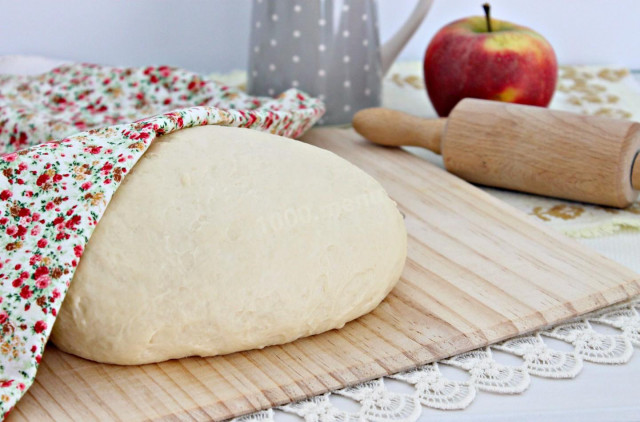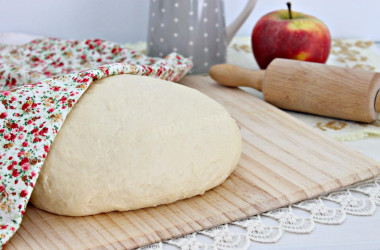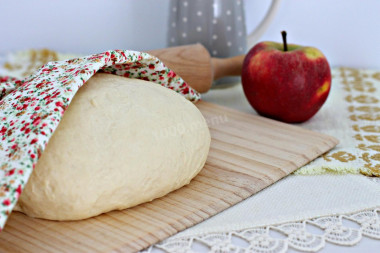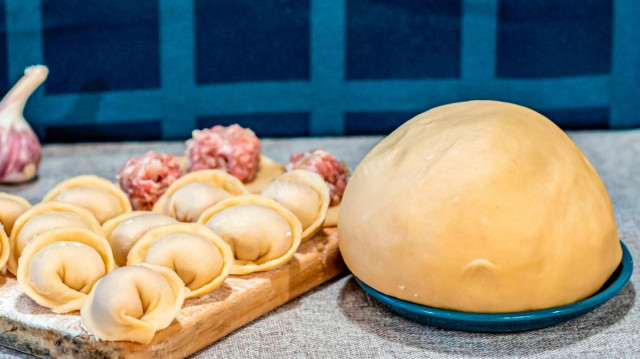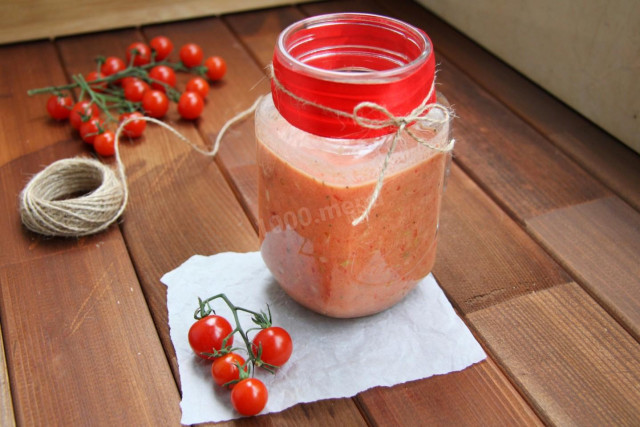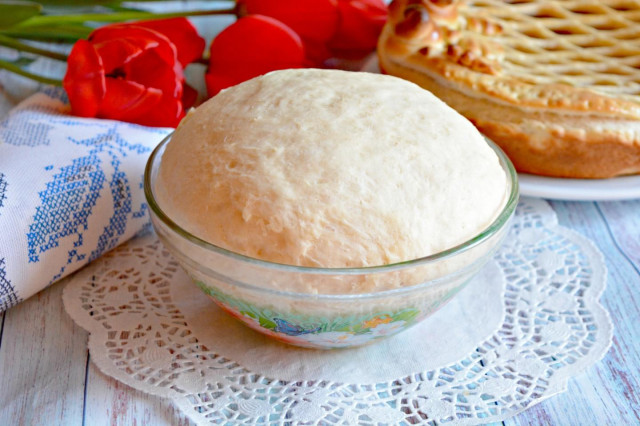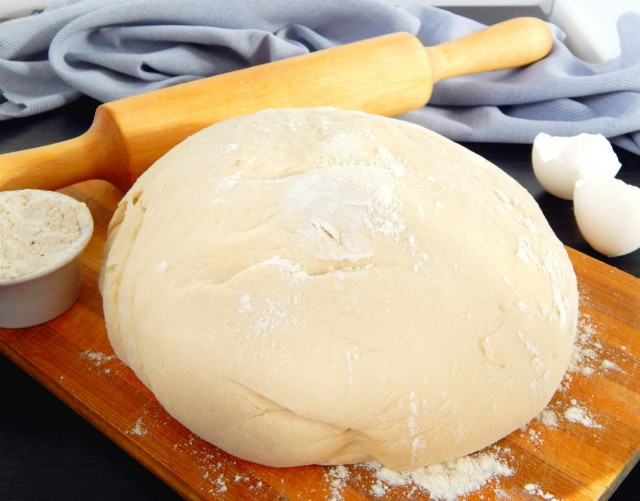Composition / ingredients
Step-by-step cooking
Step 1:
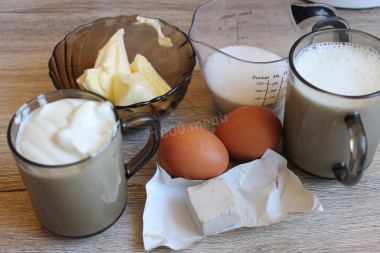
Prepare the products according to the list. Take pressed yeast. Take milk, eggs, yogurt out of the refrigerator in advance so that they are heated to room temperature. Flour should be of the highest grade, the quality of baking will largely depend on this. Melt the butter and leave to cool.
Step 2:
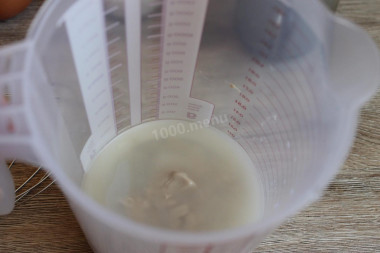
First prepare the sourdough. Pour warm water into the container. Crumble the fresh yeast. Add 2 tsp. l. sugar and 3 tbsp. l. flour. Stir, cover with a towel and leave for 10 minutes. The mass should increase by about 2 times.
Step 3:
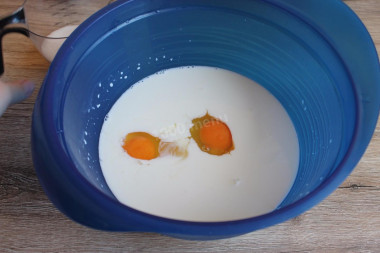
In a separate deep container, mix natural yogurt without additives, milk and eggs. Be sure to wash the eggs well before use, since even the seemingly clean shell may contain harmful bacteria. It is best to use food detergents and a brush.
Step 4:
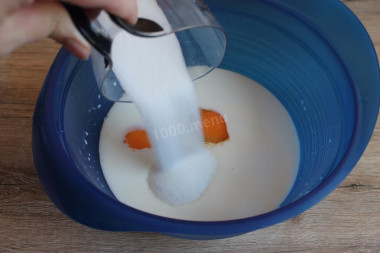
Add sugar and salt. Mix everything together.
Step 5:
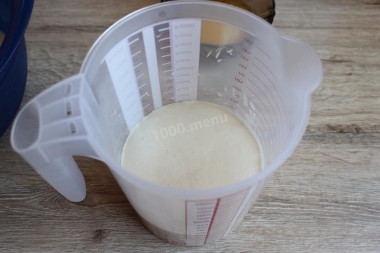
The sponge rose, and a foam cap formed on its surface. Pour it into a bowl with the milk-egg mixture.
Step 6:
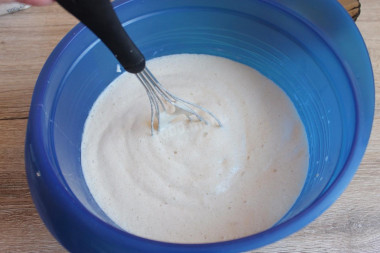
Mix the mass well with a whisk until smooth.
Step 7:
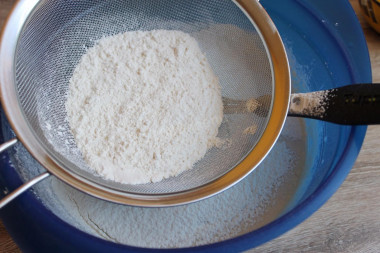
Be sure to sift the flour to saturate it with oxygen, then the baking will turn out lush and airy. Add it to the mass in parts.
Step 8:

When half of the flour is poured in, add the butter melted in a water bath or in a microwave. Knead the dough, adding the rest of the flour.
Step 9:
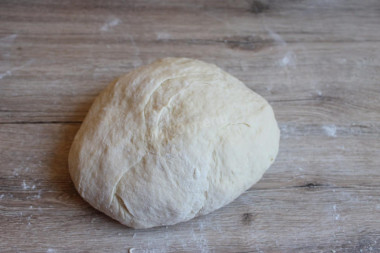
Add the flour gradually, as it may need less than indicated. Focus on the consistency of the dough. It should be elastic, soft, not sticky to the hands.
Step 10:

Put the dough in a plastic bag and put the dough in the refrigerator for 2-3 hours, preferably overnight. But if you want, you can leave it to rise in a bowl on the table at room temperature.
Step 11:
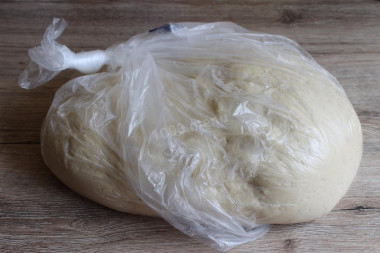
After 2 hours in the refrigerator, the dough rose perfectly. You can start cutting.
Step 12:

Knead it again. Here is such a good, very obedient dough turned out.
Step 13:

From this dough you can bake pies, pies in the oven. I made these sweet pies with apples. It turned out very tasty, try it and you. Enjoy your meal!
The liquid in which yeast is bred should be pleasant to the touch, no higher than 40 degrees. Why is this important? In a warm environment, yeast is well activated, in a hot one it will die, and in a cold one it simply will not work. To avoid unpleasant surprises, check the yeast before mixing with the rest of the ingredients. Pour a little warm milk into a bowl, stir in the yeast. Cover the bowl with a kitchen towel and put it in a warm place without drafts for 10-15 minutes. During this time, a foam yeast cap should appear on the surface of the sponge. If this did not happen, then the fermentation process has not started (the yeast is overdue or spoiled). In this case, it is worth taking other yeast, otherwise baking will not work.
Be prepared for the fact that you may need more or less flour than indicated in the recipe. Focus not on the amount of flour, but on the desired consistency of the dough. To avoid mistakes, read about flour and its properties!
Butter can be melted in the microwave in the appropriate mode (read the instructions for your device) or in a water bath. How to melt butter in a water bath? You will need two containers of different diameters. Pour water into a large one and put it on the stove. Place the smaller container on top so that it is submerged in water by about half. Put the sliced butter into it. Under the influence of boiling water, the oil will begin to melt. Stir the oil slightly to speed up the process. As soon as the pieces of oil are completely dissolved, remove the container from the stove.
Caloric content of the products possible in the composition of the dish
- Whole cow's milk - 68 kcal/100g
- Milk 3.5% fat content - 64 kcal/100g
- Milk 3.2% fat content - 60 kcal/100g
- Milk 1.5% fat content - 47 kcal/100g
- Concentrated milk 7.5% fat content - 140 kcal/100g
- Milk 2.5% fat content - 54 kcal/100g
- Acedophilin 3.2% fat content - 58 kcal/100g
- "rastishka " - 122 kcal/100g
- Danone drinking yogurt - 76 kcal/100g
- Drinking yogurt "agusha" - 87 kcal/100g
- "aktimel" natural - 83 kcal/100g
- Danone yogurt with 2.2% fat content - 96 kcal/100g
- "mazhetel" - 48 kcal/100g
- Ermann fat yogurt - 152 kcal/100g
- Yogurt with 3.5% fat content - 68 kcal/100g
- Natural yogurt with 1.5% fat content - 48 kcal/100g
- Low-fat milk yogurt - 38 kcal/100g
- Chicken egg - 157 kcal/100g
- Egg white - 45 kcal/100g
- Egg powder - 542 kcal/100g
- Egg yolk - 352 kcal/100g
- Ostrich egg - 118 kcal/100g
- Pressed yeast - 109 kcal/100g
- Whole durum wheat flour fortified - 333 kcal/100g
- Whole durum wheat flour, universal - 364 kcal/100g
- Flour krupchatka - 348 kcal/100g
- Flour - 325 kcal/100g
- Granulated sugar - 398 kcal/100g
- Sugar - 398 kcal/100g
- Butter 82% - 734 kcal/100g
- Amateur unsalted butter - 709 kcal/100g
- Unsalted peasant butter - 661 kcal/100g
- Peasant salted butter - 652 kcal/100g
- Melted butter - 869 kcal/100g
- Salt - 0 kcal/100g
- Water - 0 kcal/100g

